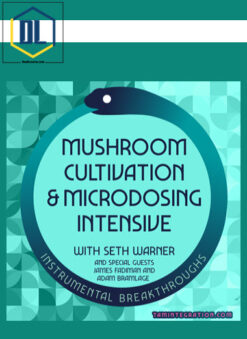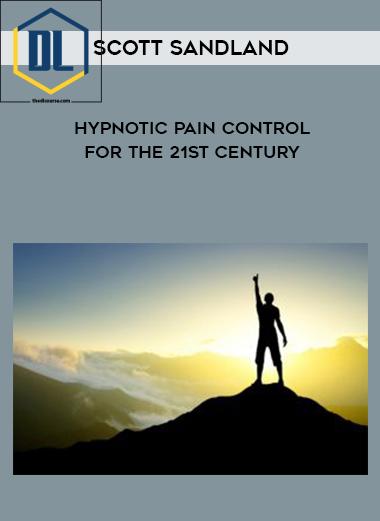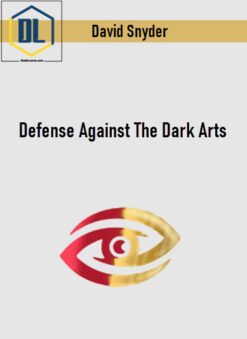-
×
 Tam Integration – Mushroom Cultivation and Microdosing Intensive
1 × $27.00
Tam Integration – Mushroom Cultivation and Microdosing Intensive
1 × $27.00 -
×
 Arash Dibazar – Mindfuck 1 & 2
1 × $63.00
Arash Dibazar – Mindfuck 1 & 2
1 × $63.00 -
×
 Activedaytrader – Advanced Bond Trading Course
1 × $84.00
Activedaytrader – Advanced Bond Trading Course
1 × $84.00 -
×
 Talmadge Harper - Unbreakable
1 × $15.00
Talmadge Harper - Unbreakable
1 × $15.00 -
×
 (The 5x5x5 Method) By Chairman’s Club September 2007
1 × $14.00
(The 5x5x5 Method) By Chairman’s Club September 2007
1 × $14.00 -
×
 Talmadge Harper – Free From Premature Ejaculation
2 × $9.00
Talmadge Harper – Free From Premature Ejaculation
2 × $9.00 -
×
 John Overdurf – Splitting Synesthesias within the Rhizome
1 × $42.00
John Overdurf – Splitting Synesthesias within the Rhizome
1 × $42.00 -
×
 Vince Kelvin – Advanced Hypnosis Mastery
1 × $22.00
Vince Kelvin – Advanced Hypnosis Mastery
1 × $22.00 -
×
 David Bond – Digital Pickup 2.0
1 × $9.00
David Bond – Digital Pickup 2.0
1 × $9.00 -
×
 “Battle Tested” SPX 15-Day Calendar On-Demand Short Course By Sheridan Options Mentoring
1 × $22.00
“Battle Tested” SPX 15-Day Calendar On-Demand Short Course By Sheridan Options Mentoring
1 × $22.00 -
×
 Alicia Streger – 28-Day Transformation Challenge
1 × $25.00
Alicia Streger – 28-Day Transformation Challenge
1 × $25.00 -
×
 ConnorsRSI Selective Trading Strategy
1 × $37.00
ConnorsRSI Selective Trading Strategy
1 × $37.00
Buy With Coupon: DLC25 (-25%)
Scott Sandland – Hypnotic Pain Control for the 21st Century
$27.00 Original price was: $27.00.$10.00Current price is: $10.00.
Product Delivery : Instant Deliver
SKU: KTWBURU0
Categories: Instant Delivery, NLP & Hypnosis
Tags: Hypnotic Pain Control for the 21st Century, Scott Sandland, Scott Sandland – Hypnotic Pain Control for the 21st Century
Description
Scott Sandland – Hypnotic Pain Control for the 21st Century
Salepage : Scott Sandland – Hypnotic Pain Control for the 21st Century
This book (200+ pages, and 43 chapters) is a combined transcript from two pain control lectures from Scott Sandland. It includes multiple classic and original techniques and, maybe more importantly, the insights into customize each of them. Understanding the variety of ways a technique can be modified allows you to tailor each process to the various conditions including type of pain (burning, shooting, aching, etc.) as well as the type of client you might be working with (auditory, skeptical, high functioning, etc).
Total Pain Management is written for the practicing hypnotist. It emphasizes client interaction and provides deep insights into working with people living in chronic pain and how to get the referrals needed to make it work. One great benefit of the transcription is the inclusion of common questions and answers from professional hypnotists in the classroom. This means you get more than just Scott’s understanding of the work, you also learn along with dozens of students as you read.
Hypnotists have built entire careers with fewer techniques than what are found in this book. Few people have brought as much creativity and effort into the world of hypnotic pain control, and the results speak for themselves. The insights included in these lectures are top notch. Anyone interested in helping clients who are suffering should read this immediately.
Many of the ideas in this book can become part of a self-hypnosis practice. If you suffer from any type of pain, and have sought solutions, you will find answers in this book!
TABLE OF CONTENTS
- chapter 1 – INTRODUCTION
- chapter 2 – objectIVES
- chapter 3 – THE ELMAN INDUCTION
- chapter 4 – THE ELMAN INDUCTION Q&A
- chapter 5 – INTRODUCTION TO PAIN
- chapter 6 – ANOTHER VIEW OF PAIN
- chapter 7 – THE SECRETS
- chapter 8 – WORKING WITH THE INDIVIDUAL IN PAIN
- chapter 9 – PAIN PREVENTION: GLOVE ANESTHESIA
- chapter 10 – GLOVE ANESTHESIA TECHNIQUE: Q&A
- chapter 11 – PAIN PREVENTION: LIGHT SWITCH TECHNIQUE
- chapter 12 – LIGHT SWITCH TECHNIQUE: Q&A
- chapter 13 – PAIN PREVENTION: GHOST HAND TECHNIQUE
- chapter 14 – GHOST HAND TECHNIQUE: Q&A
- chapter 15 – PAIN PREVENTION: ESDAILE STATE
- chapter 16 – ESDAILE STATE: Q&A
- chapter 17 – PRE / POST SURGERY
- chapter 18 – GETTING MEDICAL REFERRALS
- chapter 19 – RULES FOR A SUCCESSFUL PAIN CONTROL PRACTICE
- chapter 20 – ELEMENTS OF A SUCCESSFUL PAIN CONTROL PRACTICE
- chapter 21 – MAYO CLINIC
- chapter 22 – CHRONIC PAIN / SECONDARY GAIN
- chapter 23 – CHRONIC PAIN / SECONDARY GAIN: Q&A
- chapter 24 – PAIN REMOVAL: INTRODUCTION
- chapter 25 – PAIN REMOVAL: PAIN AS AN object
- chapter 26 – PAIN AS AN object: Q&A
- chapter 27 – PAIN REMOVAL: KINESTHETIC SWISH
- chapter 28 – KINESTHETIC SWISH: Q&A
- chapter 29 – PAIN REMOVAL: SPINNING
- chapter 30 – SPINNING: Q&A
- chapter 31 – PAIN REMOVAL: SYMBOL FRACTIONATION
- chapter 32 – SYMBOL FRACTIONATION: Q&A
- chapter 33 – SYMBOL FRACTIONATION: MORE Q&A
- chapter 34 – PAIN REMOVAL: DIMINISHING DEscriptORS
- chapter 35 – DIMINISHING DEscriptORS: Q&A
- chapter 36 – PROTOCOLS
- chapter 37 – GENERAL REINFORCEMENT TECHNIQUE
- chapter 38 – SURGERY WITH ANESTHETIC PROTOCOL
- chapter 39 – CHEMICAL FREE SURGERY
- chapter 40 – TMJ / BRUXISM PROTOCOL
- chapter 41 – PREPARING CHILDREN FOR PRODCEDURES
- chapter 42 – EMERGENCY SITUATION PROTOCOL
- chapter 43 – REVIEW & QUESTIONS
Readmore about : Scott Sandland
Proof:

Delivery Policy
When will I receive my course?
You will receive a link to download your course immediately or within 1 to 21 days. It depends on the product you buy, so please read the short description of the product carefully before making a purchase.
How is my course delivered?
We share courses through Google Drive, so once your order is complete, you'll receive an invitation to view the course in your email.
To avoid any delay in delivery, please provide a Google mail and enter your email address correctly in the Checkout Page.
In case you submit a wrong email address, please contact us to resend the course to the correct email.
How do I check status of my order?
Please log in to TheDLCourse account then go to Order Page. You will find all your orders includes number, date, status and total price.
If the status is Processing: Your course is being uploaded. Please be patient and wait for us to complete your order. If your order has multiple courses and one of them has not been updated with the download link, the status of the order is also Processing.
If the status is Completed: Your course is ready for immediate download. Click "VIEW" to view details and download the course.
Where can I find my course?
Once your order is complete, a link to download the course will automatically be sent to your email.
You can also get the download link by logging into your TheDLCourse account then going to Downloads Page.
Related products
-55%
-59%
-85%
-96%
-88%
-89%
-25%
-95%










